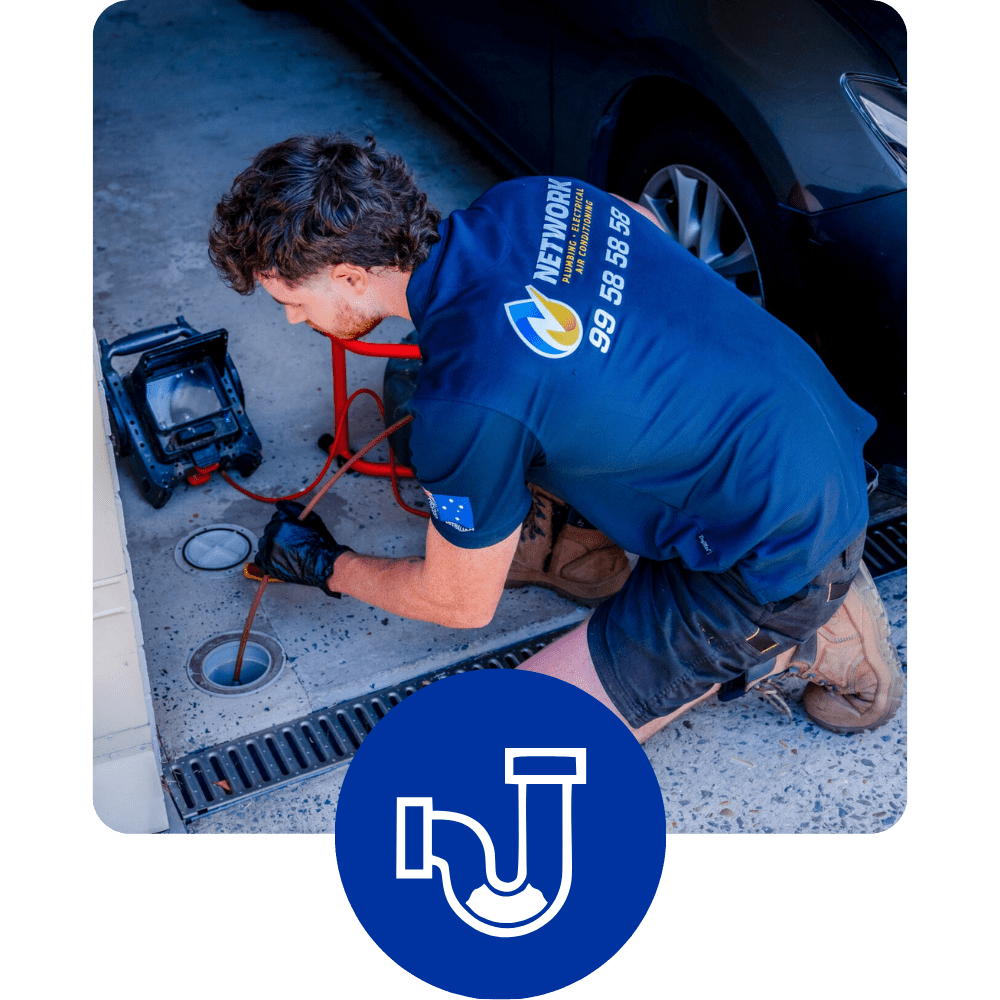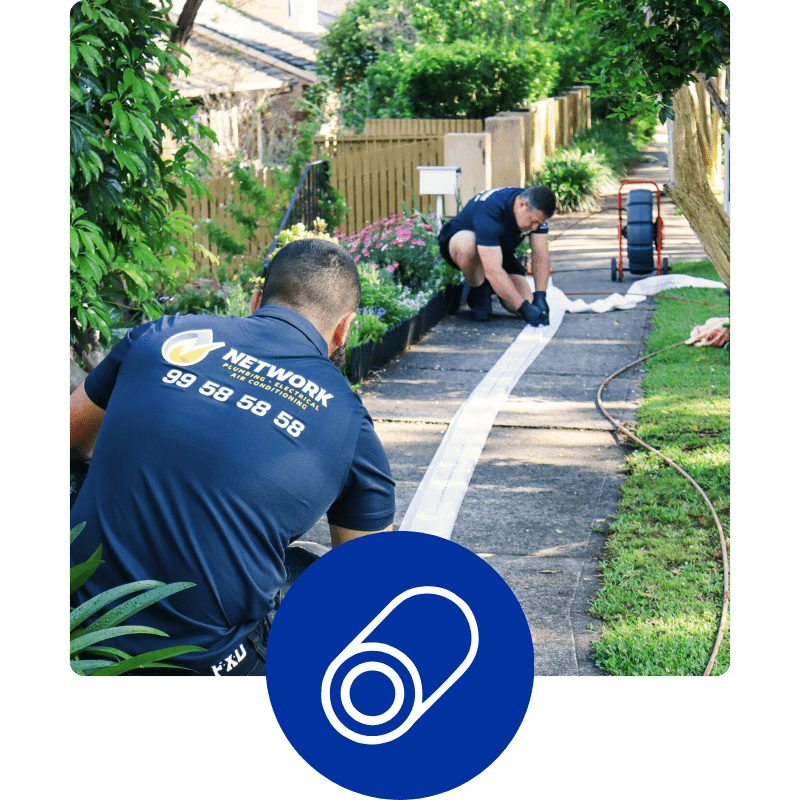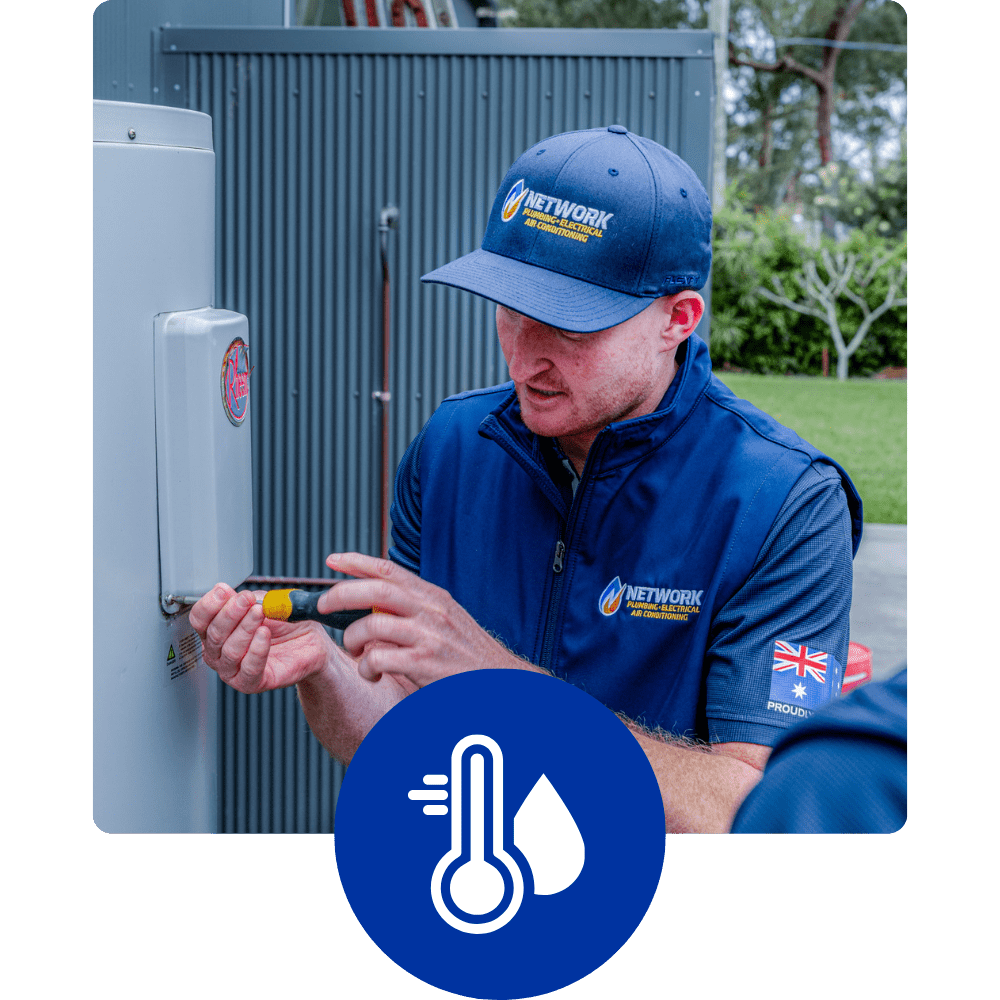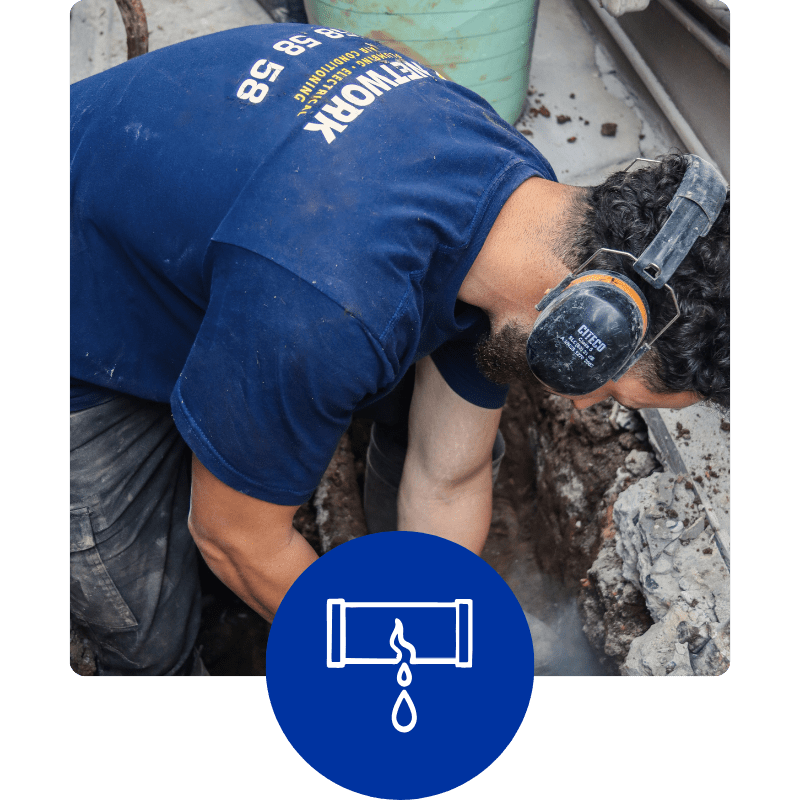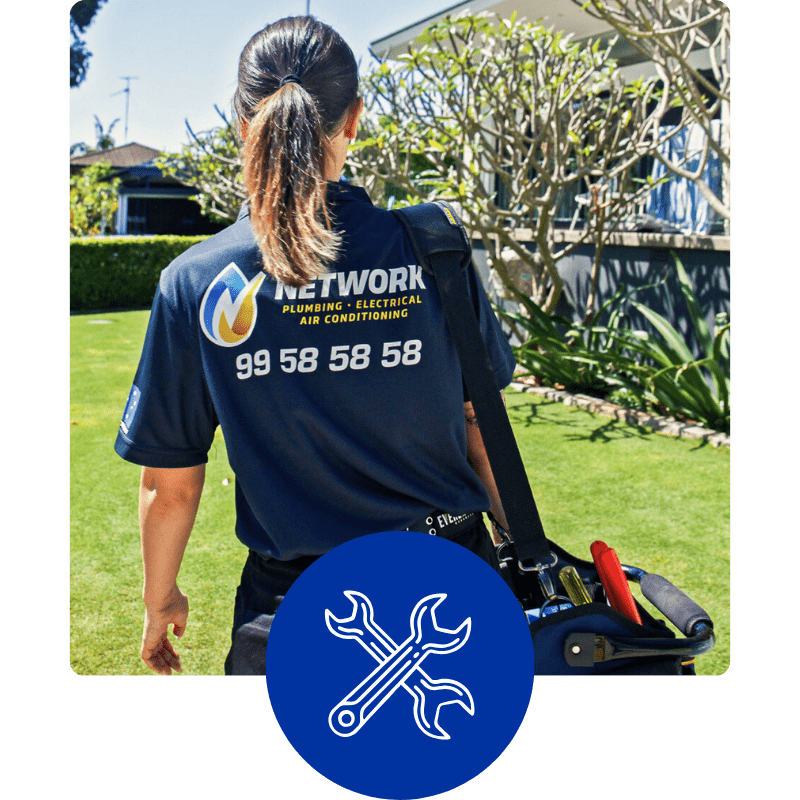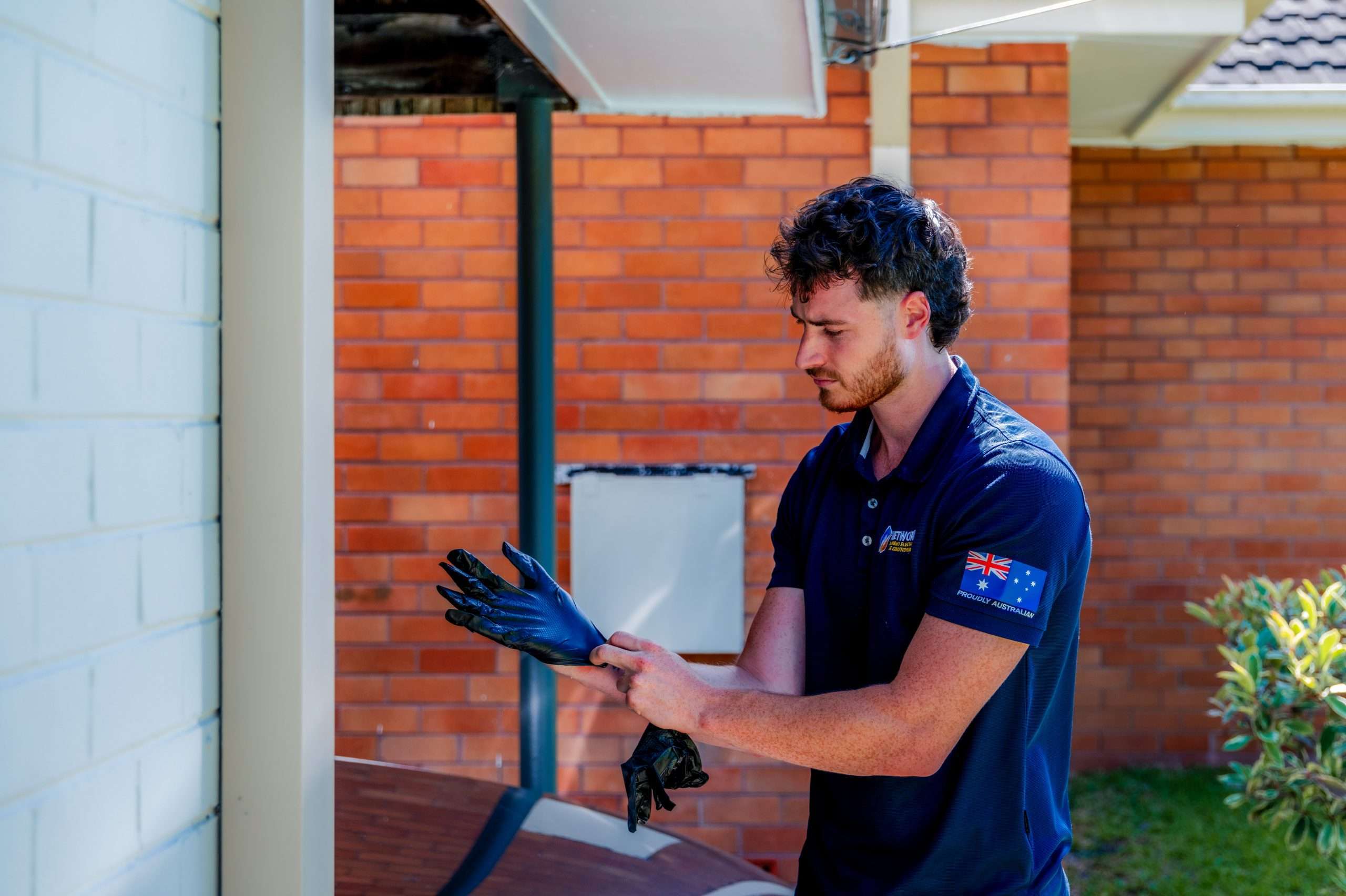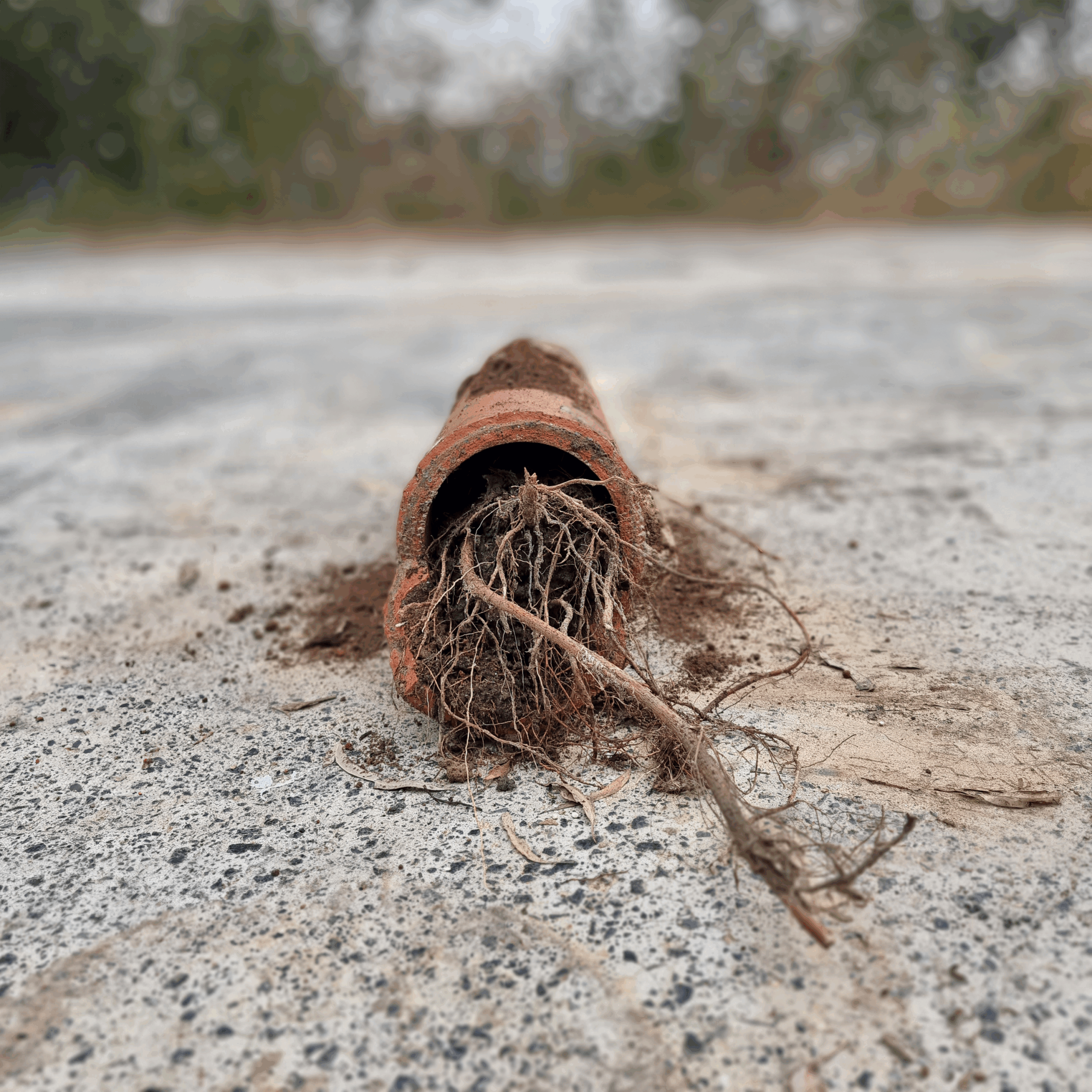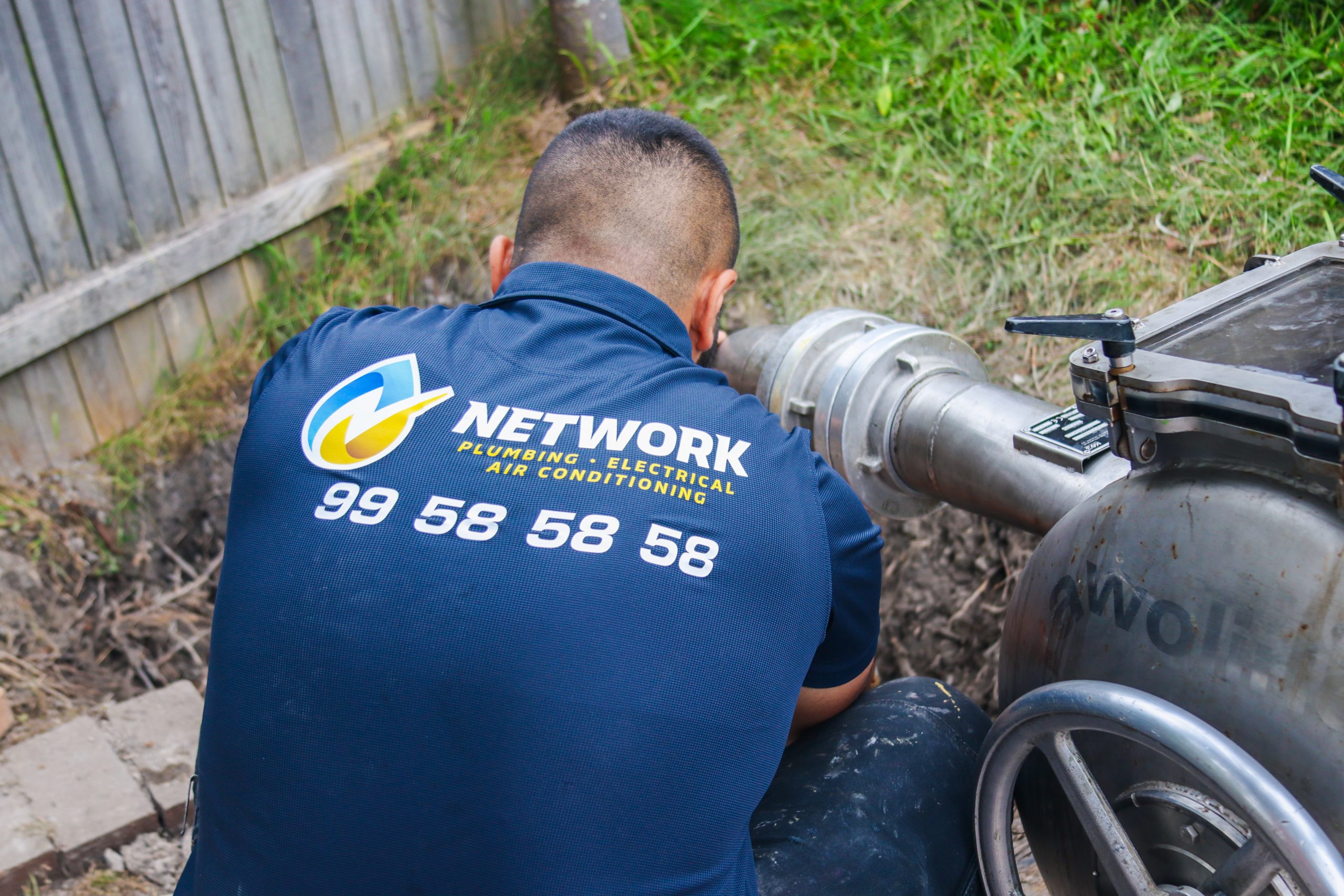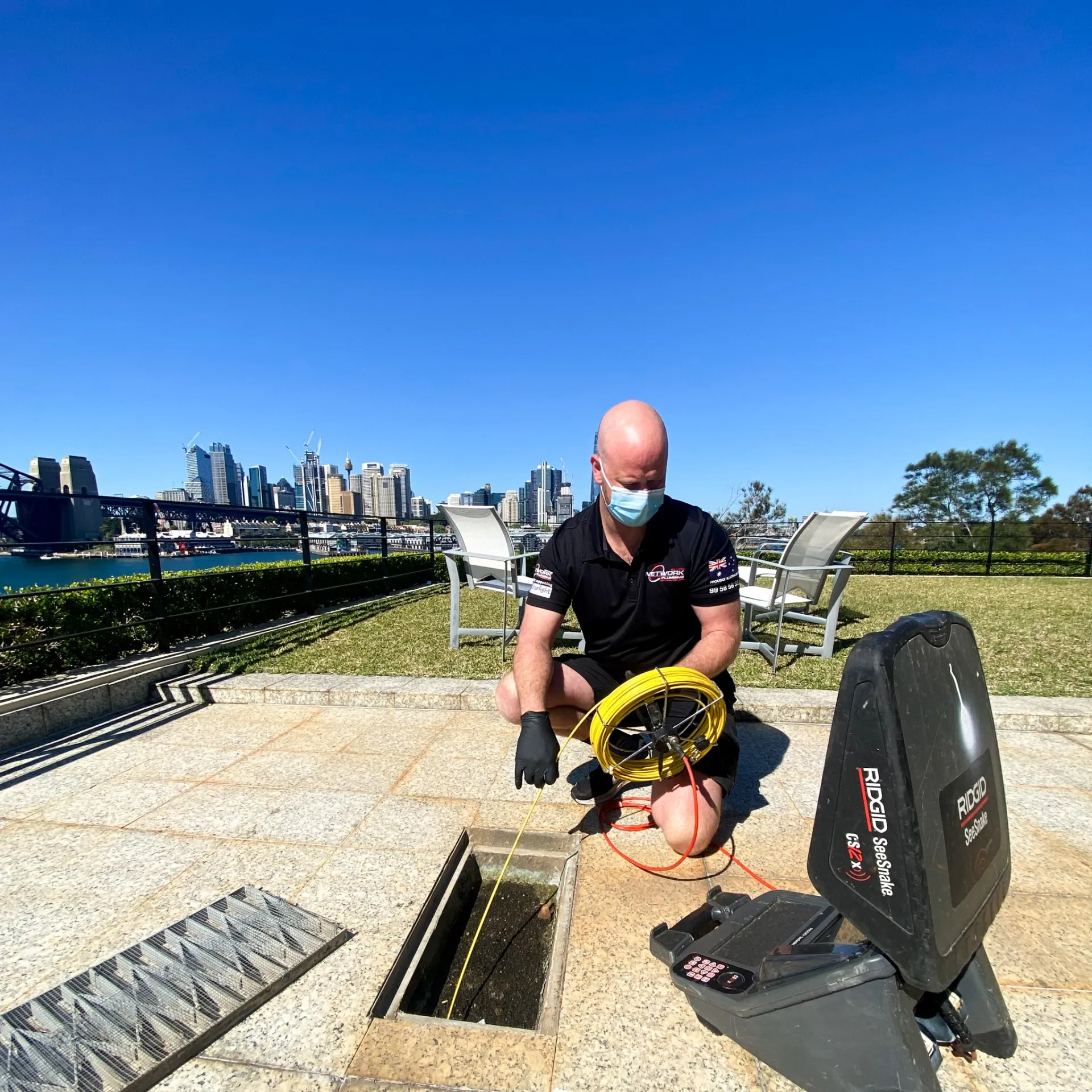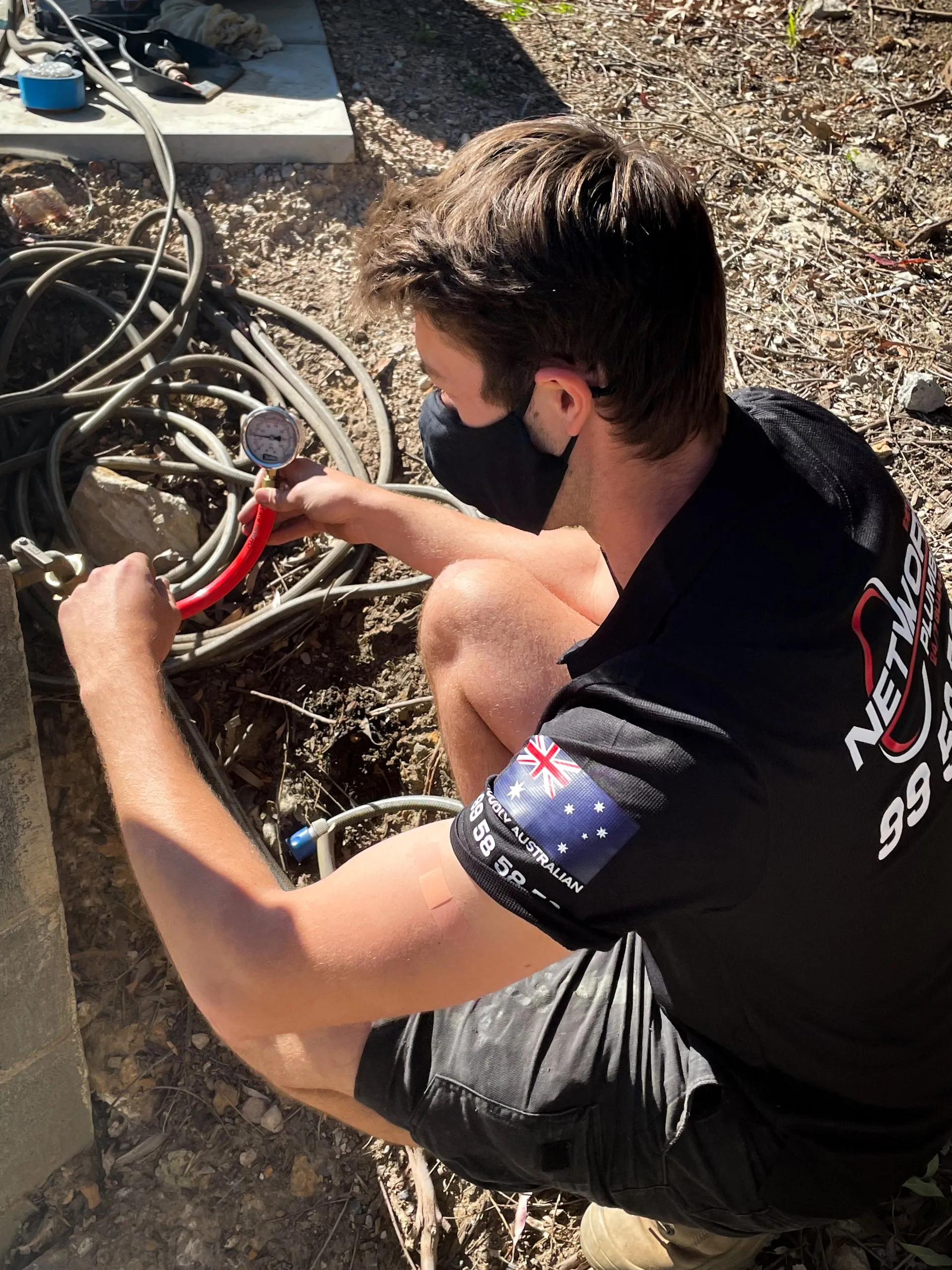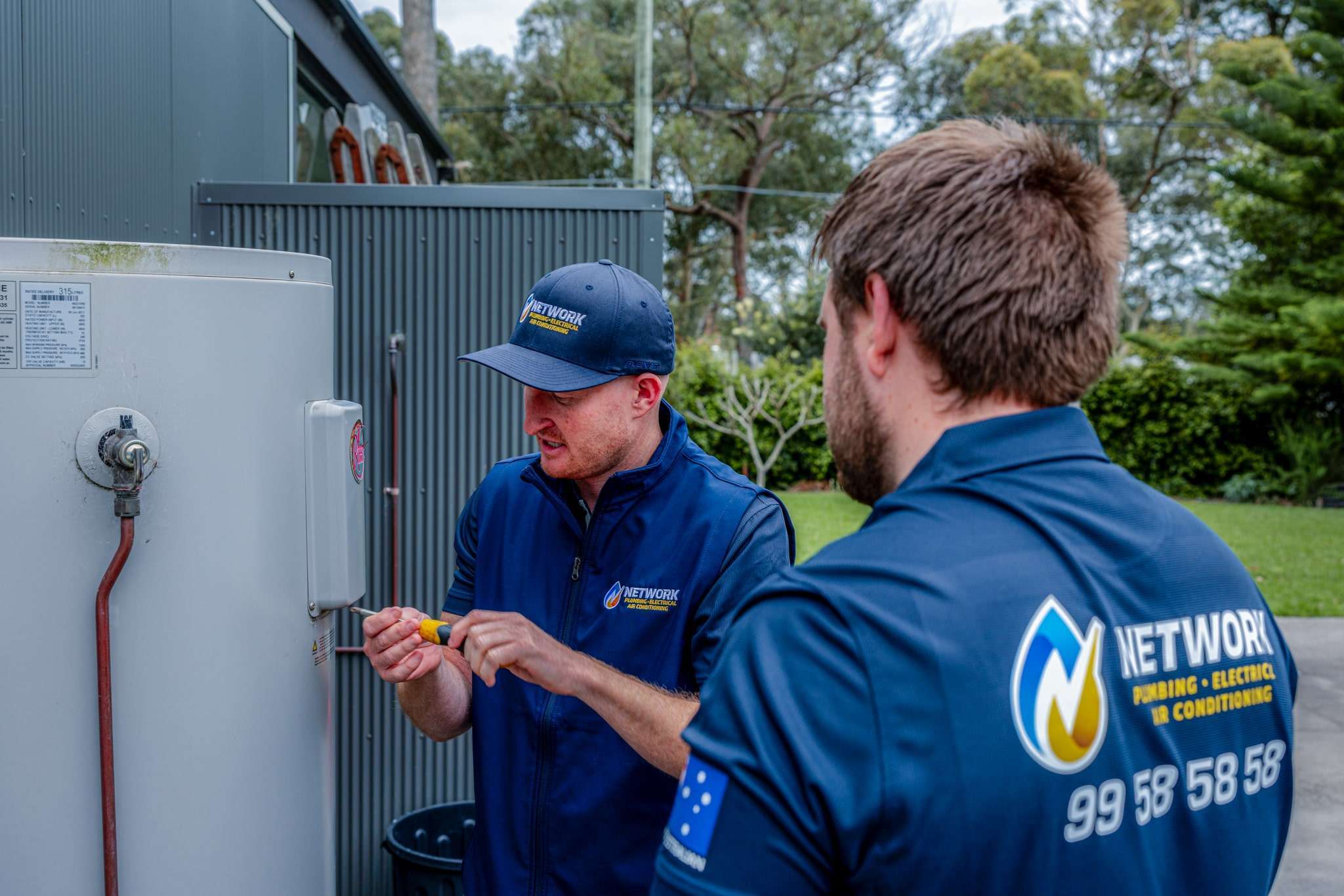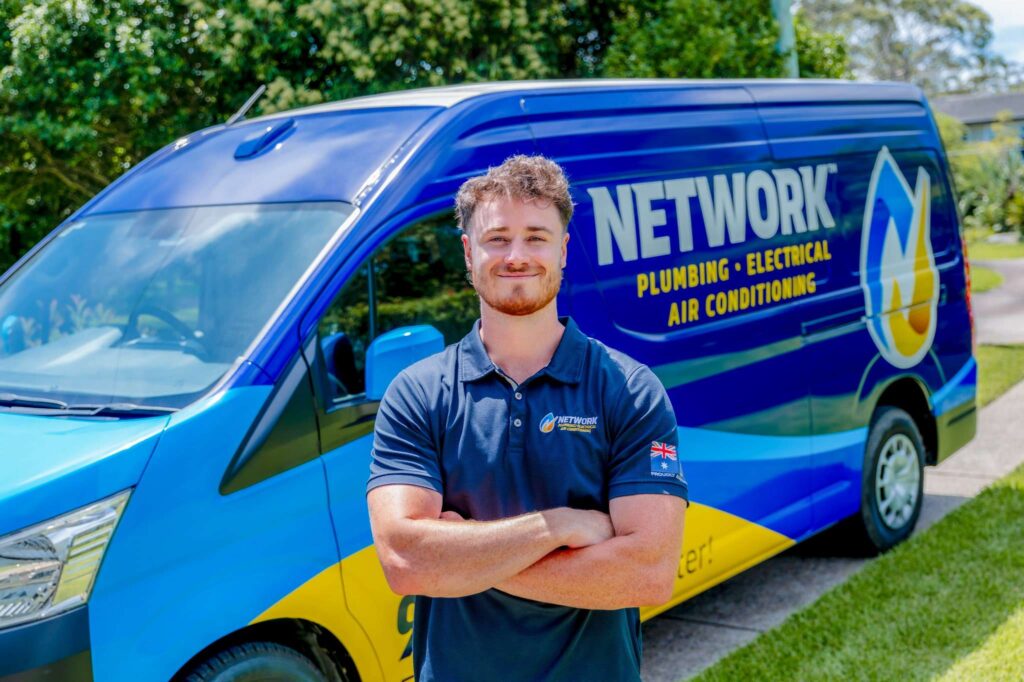
WATER LEAK DETECTION WOLLONGONG
Wollongong’s trusted water leak detection services with 40+ years of experience.
- 40+ Years Plumbing
- Licensed Experts You Can Trust
- Lifetime Labour Warranty
WATER LEAK DETECTION WOLLONGONG
- 4.9 ⭐️ Rated Techs
- Licensed & Qualified Experts
- 40+ Years Serving
- Lifetime Labour Warranty
THE DANGERS OF HIDDEN WATER LEAKS
A hidden water leak can cause significant and costly damage to your home. Beyond the immediate issue of rising water bills, persistent moisture can compromise your property’s structural integrity, rot timber frames, and cause floors to warp.
The damp environment creates a perfect breeding ground for mould, which poses serious health risks. Furthermore, water seeping near electrical wiring presents a severe safety hazard. For these reasons, what appears to be a small leak requires immediate attention.
Acting fast is the key to protecting your home and family from long-term consequences and expensive repairs.
Our licensed plumbers respond quickly to diagnose and resolve your water leak issues. Using advanced, non-invasive leak detection technology, we pinpoint the exact source of the problem without causing unnecessary damage.
After isolating the water supply, we complete reliable repairs on the spot where possible. To prevent future issues, we thoroughly re-test the system and can provide expert recommendations, such as installing a pressure limiting valve or scheduling routine maintenance checks.
We don’t just fix the leak; we provide lasting solutions to safeguard your property.
Services Provided By Experienced Plumbers Near You
signs you may have a hidden water leak
Not all leaks are as obvious as a dripping tap or a visible puddle. Many occur behind walls, under floors, or underground, going unnoticed for weeks or months. Being aware of the subtle warning signs is crucial for catching these problems early and preventing extensive damage. If you notice any of the following, it is time to call a professional leak detection plumber in Wollongong.
- Unexpectedly High Water Bills
- Damp Patches or Discolouration
- Musty or Mouldy Odours
- Warped or Damaged Surfaces
- Hissing or Dripping Sounds
- Visible Mould or Mildew
- Spinning Water Meter
- Reduced Water Pressure
- Cracks in Walls or Foundations
- Warm Spots on the Floor
- Constantly Running Hot Water System
common leak locations in wollongong homes
This is the most common area for leaks, often originating from shower waterproofing failures, leaking shower taps, cracked tiles or grout, or failed seals around the bath.
A constantly running or leaking toilet can waste a huge amount of water. Leaks can occur at the cistern inlet or outlet valve, the connection pipe, or the wax seal at the base.
The pressurised pipes that deliver water to your taps and fixtures can develop pinhole leaks or splits due to age, corrosion, or high water pressure.
Pipes located under concrete slabs or in the ground can corrode or crack over time due to ground movement or soil conditions. These are notoriously difficult to detect without specialised equipment.
Damaged roof tiles, rusted gutters, or failed flashing around vents and chimneys can allow rainwater to enter your roof space, leading to ceiling stains and structural damage.
Flexible hoses connecting dishwashers and washing machines can burst, and internal components can fail, causing major flooding and water damage.
Underground sprinkler systems and outdoor taps are susceptible to damage from root intrusion, freezing, or accidental impact.
EMERGENCY WATER LEAK DETECTION SERVICES WOLLONONG
- Emergency Plumbers Available
- 40+ Years Solving Emergencies
- Equipped With Stocked Trucks
Emergency plumbing requires the plumber to have a strong skill set of knowledge, an ability to work under pressure to get the job done, and the right plumbing tools on hand. Time is of the essence in an emergency plumbing situation.
Our plumbing teams include water leak experts who are equipped with a wide variety of tools needed to handle drains, hot water system failures, or gas fitting issues.
WHAT SAFE STEPS CAN I TAKE IN A PLUMBING EMERGENCY?
If you are experiencing a burst pipe, locating your water supply and turning it off until our emergency service arrives may just save you unforeseen costs. Limiting the plumbing service by turning off the water mains is usually the safest play. For emergency burst pipe repair, our plumbers are available 24/7 to assist you.
If your emergency involves blocked drains, locating and turning off your water mains might be advisable. If you’re experiencing backflow in your plumbing service, turning off your water will inhibit any flow of water from your taps or any toilets that might be flushed while our blocked drain emergency plumber Sydney are on the way.
If it’s an emergency hot water situation and you no longer have any hot water, waiting for our emergency plumbers to arrive is probably your only option.
If your hot water heater has sprung a leak, be careful of the hot water that may be escaping from the hot water tank. Use towels and buckets to collect the water leaks where possible but remember you’re dealing with hot water, safety above all else. Our local 24 hour plumber near you will assess the situation and make sure everyone is safe before proceeding to fix your plumbing issues. Rest assured, you’re in safe hands, we deliver great service at every turn.
Hot water systems that require a gas connection should be treated with care. In some cases, turning off your gas supply in an emergency may be appropriate. When you contact our emergency plumber Sydney, they will advise you on the best action forward.
Call Network Plumbing for emergency plumbing service NOW.
BEFORE & AFTER AN EMERGENCY DRAIN REPAIR
Wollongong Emergency Drain Repair Plumber Near You
- Expert Water Leak Specialist
- Help Prevent Water Damage
- Licensed Plumbers
- Fast Action

Wollongong's local trusted plumber
Welcome to your ultimate guide for finding the best plumbing, electrical, and air conditioning services near you. Whether you are facing an unexpected emergency or planning routine maintenance, we have made it easy to connect with top-rated professionals in your area.
Our trusted network of experts is just a click away, ensuring you receive reliable and high-quality service for all your home needs. Find the right professionals to keep your home running smoothly and efficiently.

Real reviews from real customers
Hear directly from our clients about their experiences with our expert technicians.
Over the moon happy with my experience with Network Plumbing. We had our hot water fixed ! And a smell that we couldn’t find for ages .. But was found by Network, which was fixed with in minutes.. Very professional and friendly Highly recommend
Jake from Network plumbing arrived promptly,assessed the problem and rapidly restarted our Rheem stellar water heater.First class service.
Another job done using Network, I used both plumbers and electricians this time... quick in and out, very professional.. they let me know when they were coming and kept me informed. Good job team.. not cheap but what is.. very professional
Thanks for prompt and professional service. Great job! Highly recommend.
Thanks for unblocking my sewer! Appreciate the swift response
They service my hot water system. Thank you.
I had a reverse cycle air conditioning unit replaced and found the installation process from beginning to end was handled with ease and professionalism.
I had my electrical board replaced and it was a great experience. Highly recommend
Fantastic plumbers, came round asap and fixed my dodgy toilet, thank God cause it stank so bad I think my neighbours called them too 😅. Very professional, punctual, polite and good prices. Highly recommend 👌
Great company to work with. We service their vehicles frequently and value their partnership. Always friendly and awesome customer service. Scott Irwin is the best and ready to assist anyone in need. 5 stars 🙌
Excellent company to deal with. on time, very professional and efficient.
Legendary service, always on time
Great work from the network team, upgraded my switchboard and put in some powerpoints and lights in my home. Excellent communication from all sides of the business and will definitely will be using them again.
Dealt with these guys, awesome effort would hire again
Thank you Network Plumbing for attending the same day and providing fast and efficient service when my hot water system failed.
Called and spoke with the girls in the office receiving the calls. Super professional and easy to deal with. Well done and thank you !
We supply GPS tracking to their Sydney fleet. Great people to deal with, positive, fast and professional.
Network Plumbing did a great job at our place, installing a very efficient and effective drainage system that will help alleviate our previous drainage problems. From the time the quote was provided to completing the finished job, all the team members were professional, courteous and did an excellent job. Everything was taken care of including liaising with Council for approval requirements through to remediating the lawn afterwards. Each day, the team thoroughly cleaned up the driveway and other public spaces to ensure we and the public were not negatively impacted by the ongoing work. Thank you!
I can't thank Jordan, Oliver and George enough for installing new taps in kitchen, and taps, shower rose and toilet cistern in my bathroom. The boys were very polite, respectful, friendly and very professional. Thank you very much for doing such a wonderful job! Highly recommend using Network Plumbing. Loretta
We had to make an emergency call out and although the plumber that came out on the day was only to make a temporary solve, they let us know that they would send someone out the next day. We figured we would have to chase it up but we received a call first thing in the morning to let us know that they would be sending out a senior plumber within the hour. Spencer showed up, he was very knowledgeable, very friendly, and had us right in no time. Would highly recommend this team and their services!
Matt was incredibly helpful and caring. He assessed and completed our plumbing jobs to a high standard.
Great work Mat and Joey. Thanks to Brendan who always looks after us.
Line took my call promptly and politely and got things underway at Lightning speed . Shaun, Micah and team were professional and real gentleman. I use Network plumbing every time for peace of mind
Billy and Danny were simply sensational on the roof today, saftey was the number one priority and then they took every measure to make sure everything was weather proof
Chase attended today. He was efficient and capable. He sorted our problems quickly and I couldn’t be happier.
Andrew and Will where fantastic. They worked all day to fix a massive leak and reconnect the whole water line to the laundry. They did this during the worst weather conditions.. raining most of the day. They had to travel through the house and removed their shoes every time.. and didn't leave until everything was as they found it. LIfe savers
Fast & professional! Thanks to the young champ Will!
Chase was very helpful and efficient and also gave amazing advice for unrelated problems
Thanks will s and Andrew. Great job b
Quite happy with the quality of their work and their professionalism. Roland from Network Plumbing was very helpful.
Fantastic work done by Jim. He was so thorough and patient with troubleshooting a stubborn blocked drain issue in the bathroom. Spent an hour fixing it until it was to his standard. Thank you very much!
Spencer was outstanding
Ryan did a great fast job. Very happy.
Thanks Matt, Micca, Phil & Danny for being on time, taking care to do a professional job and being the definition of teamwork! Thanks also Jordan for your patience and customer service
Friendly and efficient!
So happy with the service we received today! Spencer and Matt were so helpful, knowledgeable and lovely. Thank you so much for coming out so quickly!
An excellent job done!
The plumbing team from Network did an amazing job fixing the leaking exterior water line and the broken sewage line in the rear garden. The communications were excellent and team exhibited a very high level of professionalism. The clean up and restoration after completion was also exceptional, you would not know there was a 1.5m excavation until the shrubs in the attached photo
Roland and Matt went above and beyond in getting our dishwasher installed. We had two unexpected issues with the dishwasher pipes/hoses, they were very patient and made sure everything was working as expected.
Ethan and Aidan were prompt and fixed issues in our unit without much hassle. Would recommend network.
I highly recommend network plumbing! They were responsive, professional, and got the job done efficiently. I had an emergency with a burst pipe in my kitchen, and they sent Ethan over within a couple of hours and he did a wonderful job
Ryan Banner really sorted out my rap issues, would recommend 😊
Network Home Services Wollongong area. Thanks to Kate for arranging Brad to come out and fix my washing machine taps before my new washing machine turned up. Brad phoned to let me know he was on his way and turned up exactly when he said he would, looked and diagnosed problem straight away. He and his off-sider (sorry I missed his name) were pleasant friendly and efficient. Quoted and did the job there and then and also checked our pressure. Also gave us some advice as to what to look out for in case we have other problems. Thanks so much Brad, it was nice to meet you both. Cheers!
I had a great experience with Network Plumbing! A family member recommended them, and I’m so glad I called. They sent out a plumber named Chase, and he was fantastic. He quickly identified the issue with my leaking toilet and had it fixed in no time. Chase was professional, friendly, and really knew his stuff. I highly recommend Network Plumbing for any plumbing needs – they’re reliable, efficient, and top-notch!
Chase came out to my place for a leak in the bathroom and was very clean,tidy and professional would 100% recommend network plumbing
Tristan and his team of Aiden, Connor, Lachlan and Declan did a great job installing our new air conditioning system on budget, quickly and efficiently. In particular, Tristan's leadership was excellent.
Sandro and Will were prompt and courteous, and removed their shoes to come inside because of the wet weather. Sandro explained what he was going to do and explained what he had done after he finished. All round, I found Network an efficient operation, including the admin side. Photo: the newly installed tap and flushing mechanism
Great service Ethan and the team where very helpful and informative.
Ethan helped fix my problem. He was punctual and helpful
Called network Plumbing . They sent out a wonderful technician Ethan, he was very helpful, would call again. Happy with the service.

BLOG
Frequently asked questions
Do you have more burning questions about leaking taps, a blocked toilet or your plumbing system? Here are some plumbing solutions.
We follow a systematic and professional process to ensure your leak is found and fixed with minimal disruption.
- Initial Consultation: When you call, we listen carefully to your concerns and ask questions to understand the problem. We may offer immediate advice, such as how to shut off your water.
- Site Assessment: Our plumber arrives on time and conducts a thorough visual inspection of your property, looking for the common signs of a leak.
- Non-Invasive Testing: Using our advanced diagnostic tools, we begin the detection process, starting with the least invasive methods to narrow down the location.
- Pinpoint Location: We methodically trace the source until we have pinpointed the exact location of the leak with the highest possible accuracy.
- Provide Options and a Quote: Once the leak is found, we explain the problem clearly, outline your repair options, and provide a fixed, upfront price for the work.
- Immediate Make-Safe or Repair: With your approval, we can often perform an immediate repair. If the job is complex, we will perform a “make-safe” to stop the leak and prevent further damage before scheduling the full repair.
- Re-Test and Verify: After the repair is complete, we re-pressurise and test the system to ensure the leak is 100% fixed.
- Clean Up: We treat your home with respect and always clean up our work area thoroughly.
- Prevention Advice: We provide tips on how to prevent future leaks and monitor your plumbing system.
- Detailed Reporting: If required, we can provide a comprehensive report with photos for your insurance company or strata manager.
Your water meter is designed to detect any flow, no matter how small. When you see movement on the meter but know you are not using any water, it is a direct signal that water is escaping somewhere. Different types of movement can point to different problems.
- Constant, steady movement: If your meter’s dial is spinning continuously, you likely have a significant, active leak. This could be a burst pipe under your lawn in Figtree or a major fault in a fixture. This situation requires immediate professional attention to prevent major water loss and property damage.
- Slow or occasional movement: A dial that creeps forward slowly, or a number that ticks over every few minutes, indicates a small but persistent leak. While it may seem minor, a slow drip from a tap or a leaky toilet in your Corrimal home can waste thousands of litres of water over a year, adding up to huge bills.
- Movement only at night: If you notice your meter ticking over during the quiet hours, it often points to a concealed issue. Common causes include a toilet cistern that is quietly refilling itself or a temperature and pressure relief valve on a hot water system that is failing.
- A quick spin after a toilet flush: If you notice the meter’s dial moves a little, long after the toilet cistern has refilled, it suggests the cistern’s outlet valve is not sealing properly, allowing water to constantly seep into the bowl.
Ignoring these signs can lead to warped floors, electrical hazards, and expensive structural repairs.
Your water meter is your home’s most reliable early warning system for hidden water leaks. While a surprise high water bill is a clear sign of trouble, understanding what your meter is telling you can help you catch a problem early. If your meter shows water is flowing when all taps and appliances are off, you almost certainly leak in your property.
- Our professional, licensed plumber will arrive within the scheduled window.
- We confirm the presence of a leak by checking your water meter.
- Using our diagnostic tools, we systematically trace the water loss to its source.
- We explain the problem clearly, show you the evidence, and provide upfront pricing for repair options.
- With your approval, we will perform a make-safe or complete the repair on the spot if possible.
- We re-test the system to ensure the leak is fixed and provide you with prevention advice, such as suggestions for regular maintenance.
Our leak detection specialists are ready to provide prompt service across the entire region, including:
- North Wollongong
- Figtree
- Dapto
- Corrimal
- Fairy Meadow
- Warrawong
- Shellharbour
- Unanderra
- Towradgi
- Balgownie
- Port Kembla
- Berkeley
- Albion Park
- Kiama
- And all surrounding suburbs!
The cost involves a service fee for the detection process. The total price depends on the complexity and time required to pinpoint the leak. We provide a transparent, upfront price for both detection and repair.
Most common leaks can be found within 1-2 hours. However, very complex or multiple leaks can take longer. Our goal is to be as efficient as possible without sacrificing accuracy.
Our methods are non-invasive. We aim to find the leak with minimal disruption. In most cases, we can locate the leak without any cutting or digging. If access is required for a repair, it will be minimal and targeted.
Your main water shut-off valve is usually located at the front of your property, near the water meter. Turn the handle or tap clockwise until it stops.
We use our specialised acoustic and tracer gas equipment to pinpoint the exact location. Repair options can then be discussed, which may include a direct repair or re-routing the pipe to bypass the damaged section.
If possible, turn off your main water supply to prevent further damage. If the leak is near electrical outlets, turn off the power to that area at your switchboard. Move any furniture or valuables away from the affected area.
To find hidden leaks without causing unnecessary damage to your property, we use a combination of advanced diagnostic tools and proven techniques. Our plumbers are highly trained in using this specialised equipment to pinpoint the exact location of the problem.
Acoustic Leak Detection
This is one of the most effective methods for finding leaks in pressurised pipes. We use highly sensitive ground microphones and listening devices to “hear” the distinct sound vibrations that escaping water creates. By tracing the sound to its loudest point, our plumbers can accurately locate the leak, even if it is buried deep underground or within a concrete slab.
Thermal Imaging Cameras
Our thermal imaging cameras detect minute temperature differences on surfaces. When a hot water pipe is leaking, it will create a warm plume in the surrounding area, which shows up clearly on the camera’s display. This technology is invaluable for finding leaks in hot water lines concealed within walls, floors, and ceilings without any invasive cutting. It can also identify cold spots caused by moisture from cold water leaks.
Tracer Gas Testing
For particularly elusive leaks or situations where acoustic and thermal methods are inconclusive, we use tracer gas. A safe, non-toxic gas mixture (typically hydrogen and nitrogen) is introduced into the drained pipe system. The gas is lighter than air and will escape at the leak point, rising to the surface. We then use a sensitive gas “sniffer” or detector to identify the precise location where the gas is emerging.
Moisture Meters
These handheld devices allow us to measure the moisture content of various building materials, such as drywall, timber, and concrete. By taking readings at different points, we can map the extent of water saturation and trace the moisture back to its source, confirming the presence of a leak and identifying the affected area.
Pipe and Cable Locators
Before we begin any excavation, it is essential to know exactly where your pipes and other utilities are located. We use electronic locators that transmit a signal along a pipe, allowing us to trace its path and depth accurately. This prevents accidental damage to other services and ensures we dig in the correct spot.
Pressure Testing
To confirm if a specific section of pipework is leaking, we can isolate it and subject it to a pressure test. We use a pump to fill the pipe with water or air to a designated pressure. If the pressure drops over a set period, it confirms a leak exists within that isolated line, helping us narrow down the search area significantly.
CCTV Drain Cameras
For leaks suspected in drainage or sewer lines, we use high-resolution CCTV drain cameras. A flexible rod with a camera on its tip is fed into the pipe, sending a live video feed back to our monitor. This allows us to visually inspect the entire length of the pipe for cracks, breaks, root intrusion, or separated joints that could be causing leaks.
Dye Testing
A simple yet effective method, dye testing involves introducing a brightly coloured, non-staining dye into the plumbing system, such as a toilet or drain. If the coloured water appears in an area where it should not be (like the base of the toilet or a downstream manhole), it confirms the path of the leak.
Isolation and Step Testing
This methodical process involves systematically shutting off different sections of your plumbing system to isolate the leak. By monitoring the water meter after each step, we can determine which branch line or fixture is responsible for the water loss, greatly reducing the search area.







